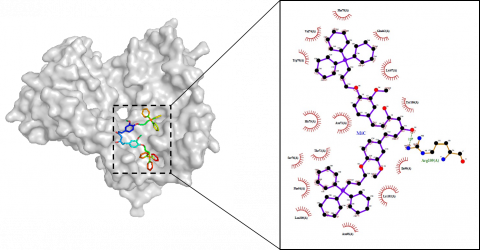Non-small cell lung cancer (NSCLC) is the most common type of lung cancer and contributes 85% of all lung cancers. Mitochondria play a vital role in cell survival and are also the primary source of ROS generation that regulates the cellular redox homeostasis. However, excess production of ROS can trigger apoptotic cell death. Hence, targeting mitochondria can be a good strategy for killing cancer cells. The dedicated thioredoxin and glutathione redox systems are the central antioxidant defense mechanisms by which mitochondria neutralize the excess ROS. In cancer these anti-oxidant systems get upregulated to cope with oxidative stress insult caused due to dysfunctional mitochondria. This upregulated antioxidant system leads to drug resistance in lung cancer. Thus targeting these upregulated antioxidant system may provide novel therapy against NSCLC. Mitocurcumin (MiC) is the derivative of curcumin that contains triphenylphosphonium moiety, which can be selectively targeted to the mitochondria.


